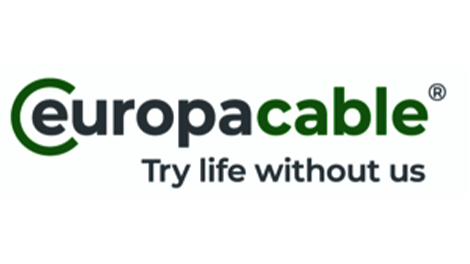Europacable – Europacable welcomes the adoption of the Delegated Act on Fire Resistance Classification
Europacable welcomes the adoption of the Delegated Act on Fire Resistance Classification by the European Commission and urges EU co-legislators to support.
Fire Resistant Cables are key for fire safety! In case of a fire they allow for continued power supply and communication ensuring that fire safety systems can operate properly.
The Delegated Act will pave the way for the drafting of a European harmonised product standard for fire resistant cables. Europacable will work closely with CENELEC to deliver on it with the aim of increasing fire safety in Europe.
SourceEuropacable
EMR Analysis
More information on Europacable: See the full profile on EMR Executive Services
More information on Christopher Guérin (President, Europacable + Chief Executive Officer, Nexans): See the full profile on EMR Executive Services
More information on The European Union: https://european-union.europa.eu/index_en + The European Union’s institutional set-up is unique and its decision-making system is constantly evolving. The 7 European institutions, 7 EU bodies and over 30 decentralised agencies are spread across the EU. They work together to address the common interests of the EU and European people.
In terms of administration, there are a further 20 EU agencies and organisations which carry out specific legal functions and 4 interinstitutional services which support the institutions.
All of these establishments have specific roles – from developing EU laws and policy-making to implementing policies and working on specialist areas, such as health, medicine, transport and the environment.
There are 4 main decision-making institutions which lead the EU’s administration. These institutions collectively provide the EU with policy direction and play different roles in the law-making process:
- the European Parliament (Brussels/Strasbourg/Luxembourg)
- the European Council (Brussels)
- the Council of the European Union (Brussels/Luxembourg)
- the European Commission (Brussels/Luxembourg/Representations across the EU)
Their work is complemented by other institutions and bodies, which include:
- the Court of Justice of the European Union (Luxembourg)
- the European Central Bank (Frankfurt)
- the European Court of Auditors (Luxembourg)
The EU institutions and bodies cooperate extensively with the network of EU agencies and organisations across the European Union. The primary function of these bodies and agencies is to translate policies into realities on the ground.
Around 60,000 EU civil servants and other staff serve the 450 million Europeans (and countless others around the world).
Currently, 27 countries are part of the EU: https://european-union.europa.eu/principles-countries-history/country-profiles_en
More information on The European Commission: https://ec.europa.eu/info/index_en + The Commission helps to shape the EU’s overall strategy, proposes new EU laws and policies, monitors their implementation and manages the EU budget. It also plays a significant role in supporting international development and delivering aid.
The Commission is steered by a group of 27 Commissioners, known as ‘the college’. Together they take decisions on the Commission’s political and strategic direction.
A new college of Commissioners is appointed every 5 years.
The Commission is organised into policy departments, known as Directorates-General (DGs), which are responsible for different policy areas. DGs develop, implement and manage EU policy, law, and funding programmes. In addition, service departments deal with particular administrative issues. Executive agencies manage programmes set up by the Commission.
Principal roles in law: The Commission proposes and implements laws which are in keeping with the objectives of the EU treaties. It encourages input from business and citizens in the law-making process and ensures laws are correctly implemented, evaluated and updated when needed.
More information on Ursula von der Leyen (President, The European Commission): https://ec.europa.eu/commission/commissioners/2019-2024/president_en + https://www.linkedin.com/in/ursula-von-der-leyen/
More information on the Delegated Act on Fire Resistance Classification by The European Commission: https://ec.europa.eu/info/law/better-regulation/have-your-say/initiatives/13844-Construction-products-classes-of-performance-in-relation-to-resistance-to-fire_en + This initiative sets out the classes of performance in relation to the resistance to fire of construction products under Construction Products Regulation (EU) No 305/2011.
More information on CEN – CENELEC: https://www.cencenelec.eu/ + The European Committee for Standardization (CEN) and the European Committee for Electrotechnical Standardization (CENELEC) are two distinct private international non-profit organizations.
- CEN, the European Committee for Standardization, is an association that brings together the National Standardization Bodies of 34 European countries.
- CEN provides a platform for the development of European Standards and other technical documents in relation to various kinds of products, materials, services and processes.
- CEN supports standardization activities in relation to a wide range of fields and sectors including: air and space, chemicals, construction, consumer products, defence and security, energy, the environment, food and feed, health and safety, healthcare, ICT, machinery, materials, pressure equipment, services, smart living, transport and packaging.
- CENELEC, the European Committee for Electrotechnical Standardization, is an association that brings together the National Electrotechnical Committees of 34 European countries.
- CENELEC prepares voluntary standards in the electrotechnical field, which help facilitate trade between countries, create new markets, cut compliance costs and support the development of a Single European Market.
- CENELEC supports standardization activities in relation to a wide range of fields and sectors including: Electromagnetic compatibility, Accumulators, primary cells and primary batteries, Insulated wire and cable, Electrical equipment and apparatus, Electronic, electromechanical and electrotechnical supplies, Electric motors and transformers, Lighting equipment and electric lamps, Low Voltage electrical installations material, Electric vehicles railways, smart grid, smart metering, solar (photovoltaic) electricity systems, etc.


